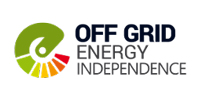
Chicago, October 28, 2020 – GlidePath Power Solutions LLC (GlidePath), one of America’s leading independent developers and operators of utility-scale energy storage and renewable energy projects, today announced that it has partnered with Renewance to advance battery recycling and repurposing efforts for the energy storage industry.
Renewance is an industrial battery life cycle management company and a winner of the Department of Energy Battery Recycling Prize. Renewance provides battery decommissioning, collection, re-use, and recycling services to the rapidly growing energy storage industry. Through this partnership, Glidepath will employ the Renewance Connect™ platform to manage its energy storage portfolio from top to bottom. The Renewance Connect platform will additionally help reduce operating costs and complexity for GlidePath, while increasing the environmental benefits of the company’s battery storage assets. To date, GlidePath is one of the largest storage operators to partner with Renewance.
“Our portfolio of energy storage projects has been growing for some time now and, in order to sustain this upward trajectory, we are thinking ahead about the full life cycle of batteries,” said Chris McKissack, CEO of GlidePath, “Our decision to collaborate with Renewance was driven in large part by our shared vision and commitment to innovation. Teaming with Renewance is an important step toward making battery recycling and re-use standard practice in energy storage.”
“Partnerships like these are critical if we are to improve the overall sustainability of renewable energy solutions aided by battery storage,” said Anne Foster, Head of ESG at Quinbrook Infrastructure Partners, of which Glidepath is a portfolio company. “The industry needs to resolve the recycling and re-use case upfront, not down the track. Renewance and Glidepath are doing just that and we compliment them both. Quinbrook is strongly committed to ESG and sustainable investing and innovations in recycling and re-use of batteries is an increasingly important ‘must have’ solution.”
read more













